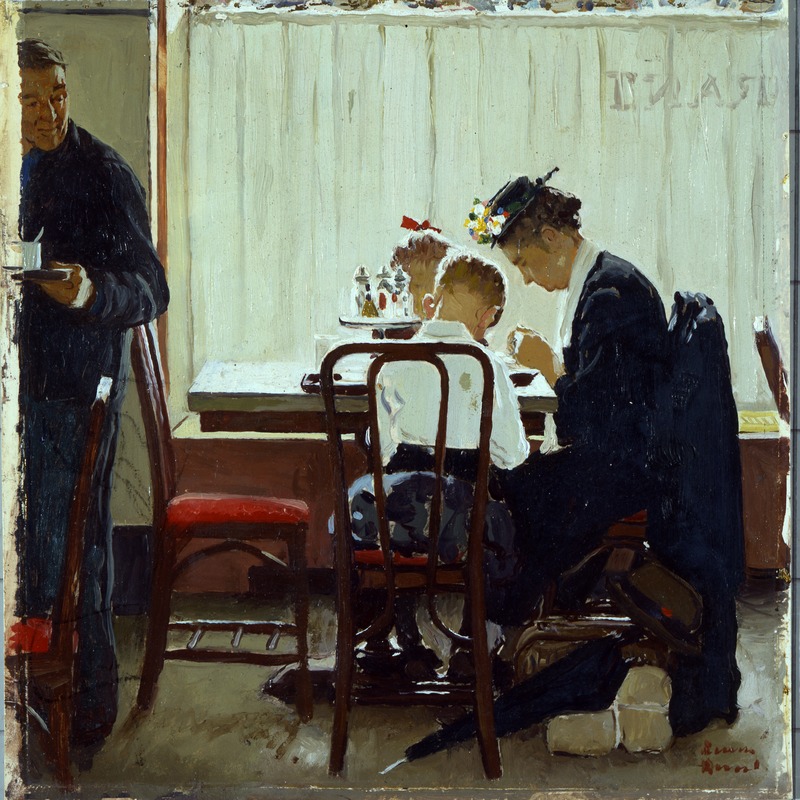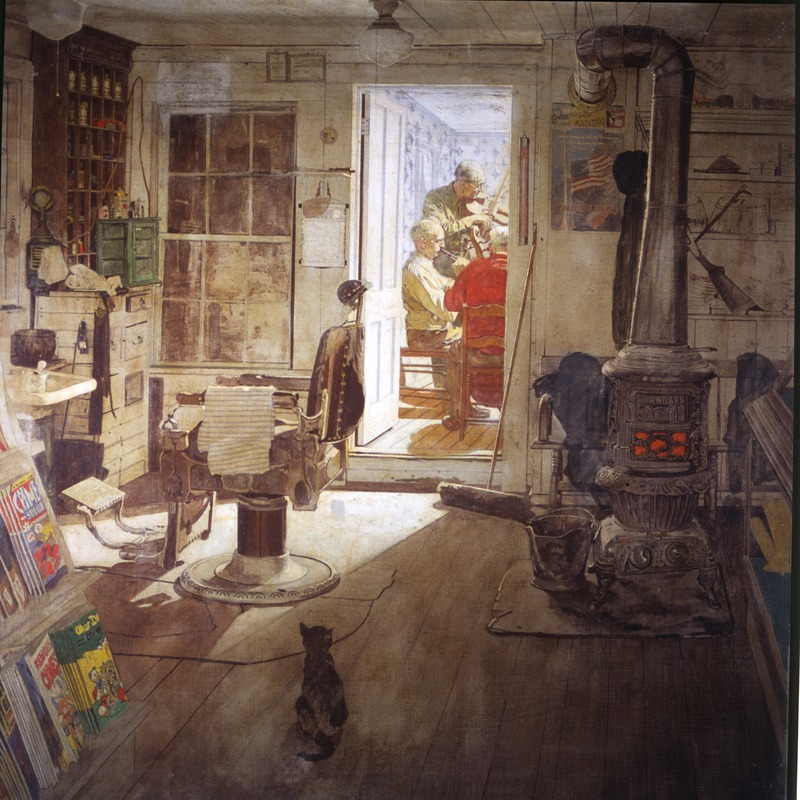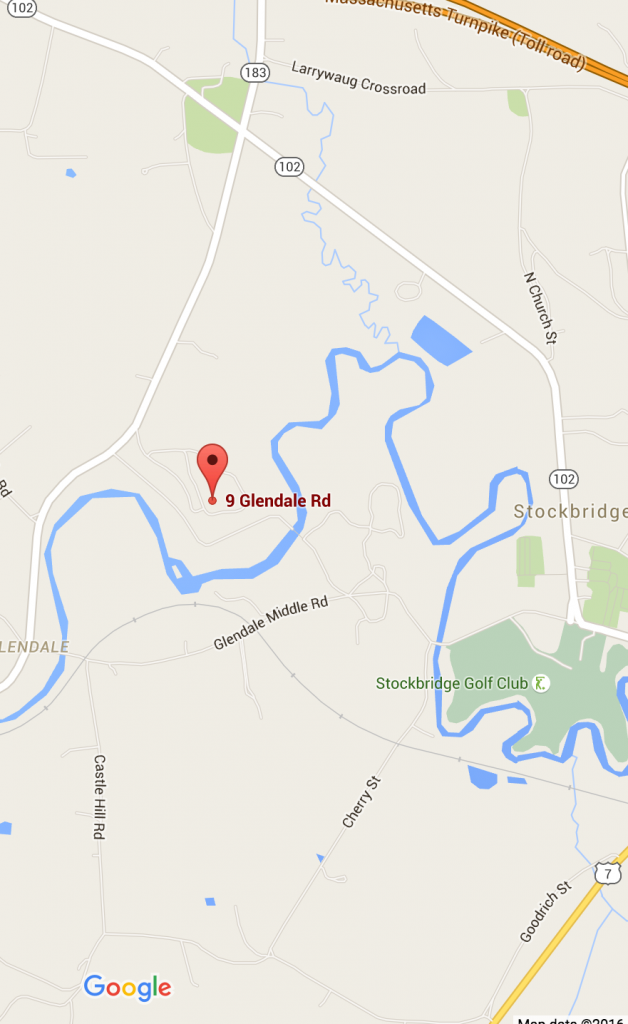The Artist’s Process: Norman Rockwell’s Color Studies
Known for his painted magazine covers and illustrations for stories, books, and advertisements, Norman Rockwell was a masterful draftsman and composer who navigated an exacting artistic process that made it possible for him to envision every aspect of a final work before it was begun. By the time a canvas was on his easel, he would have completed several stages of preparation, including the creation of pencil and charcoal sketches, model sessions that were photographed as reference, at least one highly detailed tonal drawing, and one or more studies that would help him to establish the color palette for his art.
To create his color studies, Rockwell’s final, large scale charcoal drawings were photographed and printed on photographic paper. His color studies were painted on top of these photographs, or on clear acetate overlays. Color studies allowed Rockwell to consider how his color idea would play on the newsstand before moving ahead to the final painting.
Their utilitarian purpose of Rockwell’s color studies belies their strength and aesthetic beauty, which traverse the many phases of his career. Guided by the artist’s imagination and astute observational skills, character, plot, and setting are brought together in these carefully considered elements of Rockwell’s visual narratives, in studies that are increasingly refined through his painstaking perfectionism.
About the Artist
Born in New York City in 1894, Norman Rockwell always wanted to be an artist. At age 14, Rockwell enrolled in art classes at The New York School of Art (formerly The Chase School of Art). Two years later, in 1910, he left high school to study art at The National Academy of Design. He soon transferred to The Art Students League, where he studied with Thomas Fogarty and George Bridgman. Fogarty’s instruction in illustration prepared Rockwell for his first commercial commissions. From Bridgman, Rockwell learned the technical skills on which he relied throughout his long career. Learn more…
DIRECTIONS
Norman Rockwell Museum
9 Glendale Road Route 183
Stockbridge, MA 01262
413-931-2221
Download a Printable version of Driving Directions (acrobat PDF).
Important note: Many GPS and online maps do not accurately place Norman Rockwell Museum*. Please use the directions provided here and this map image for reference. Google Maps & Directions are correct! http://maps.google.com/
* Please help us inform the mapping service companies that incorrectly locate the Museum; let your GPS or online provider know and/or advise our Visitor Services office which source provided faulty directions.









